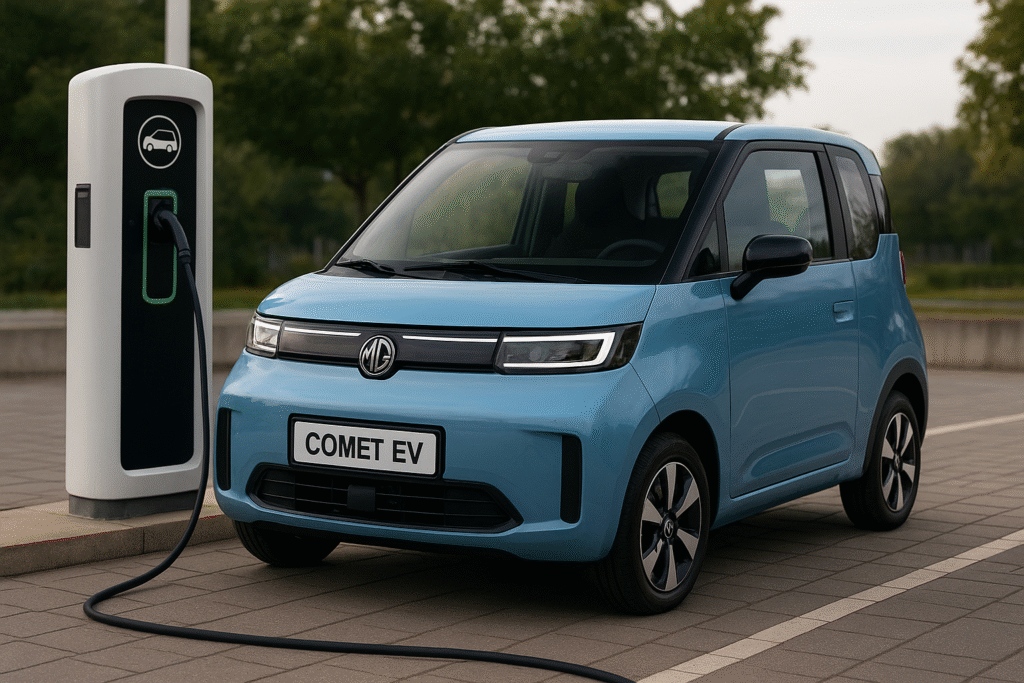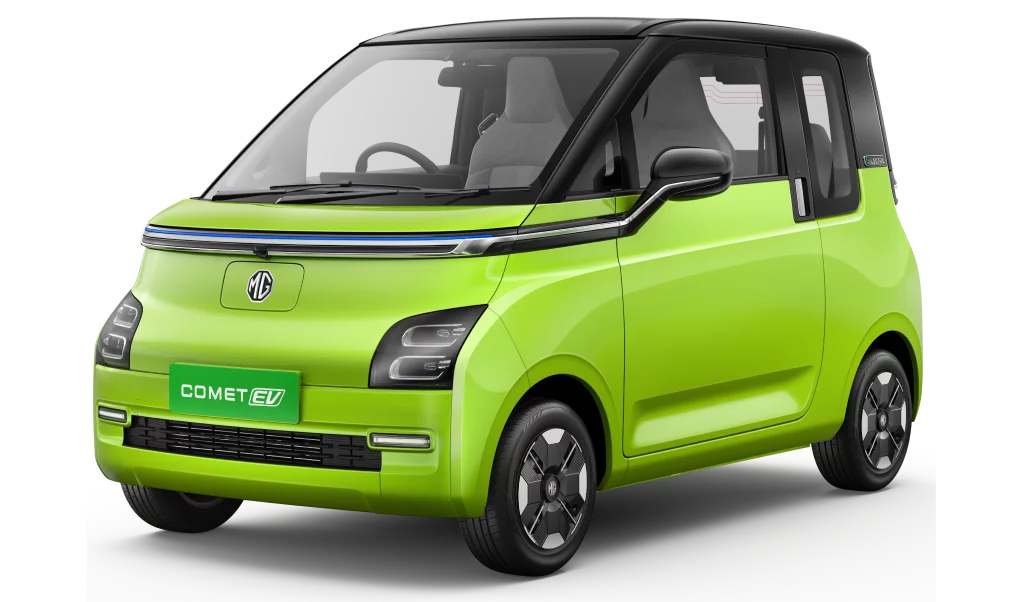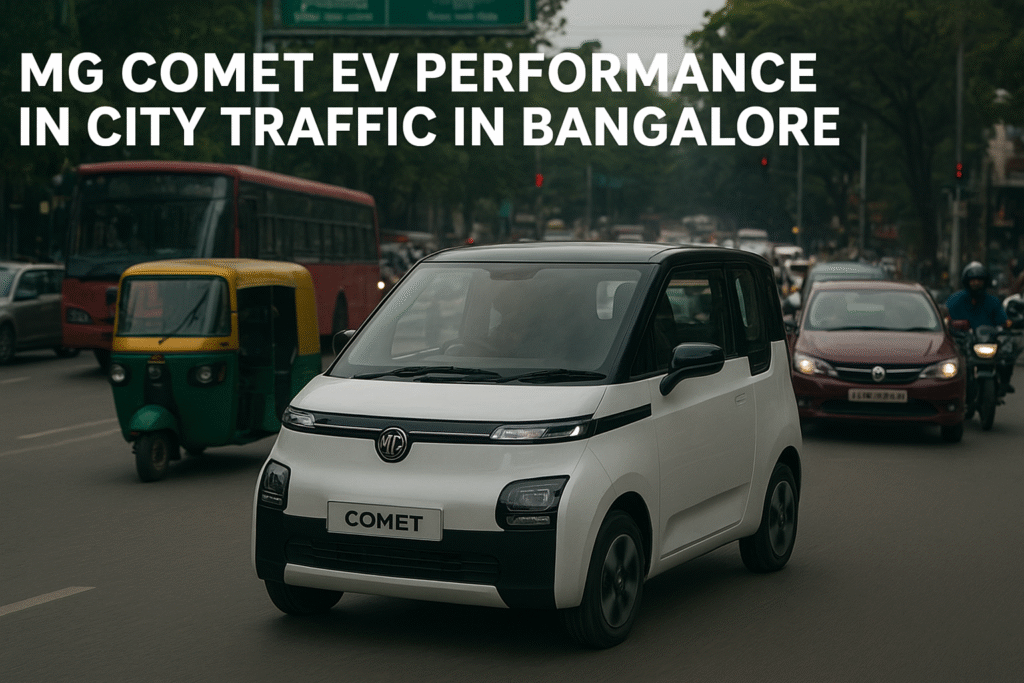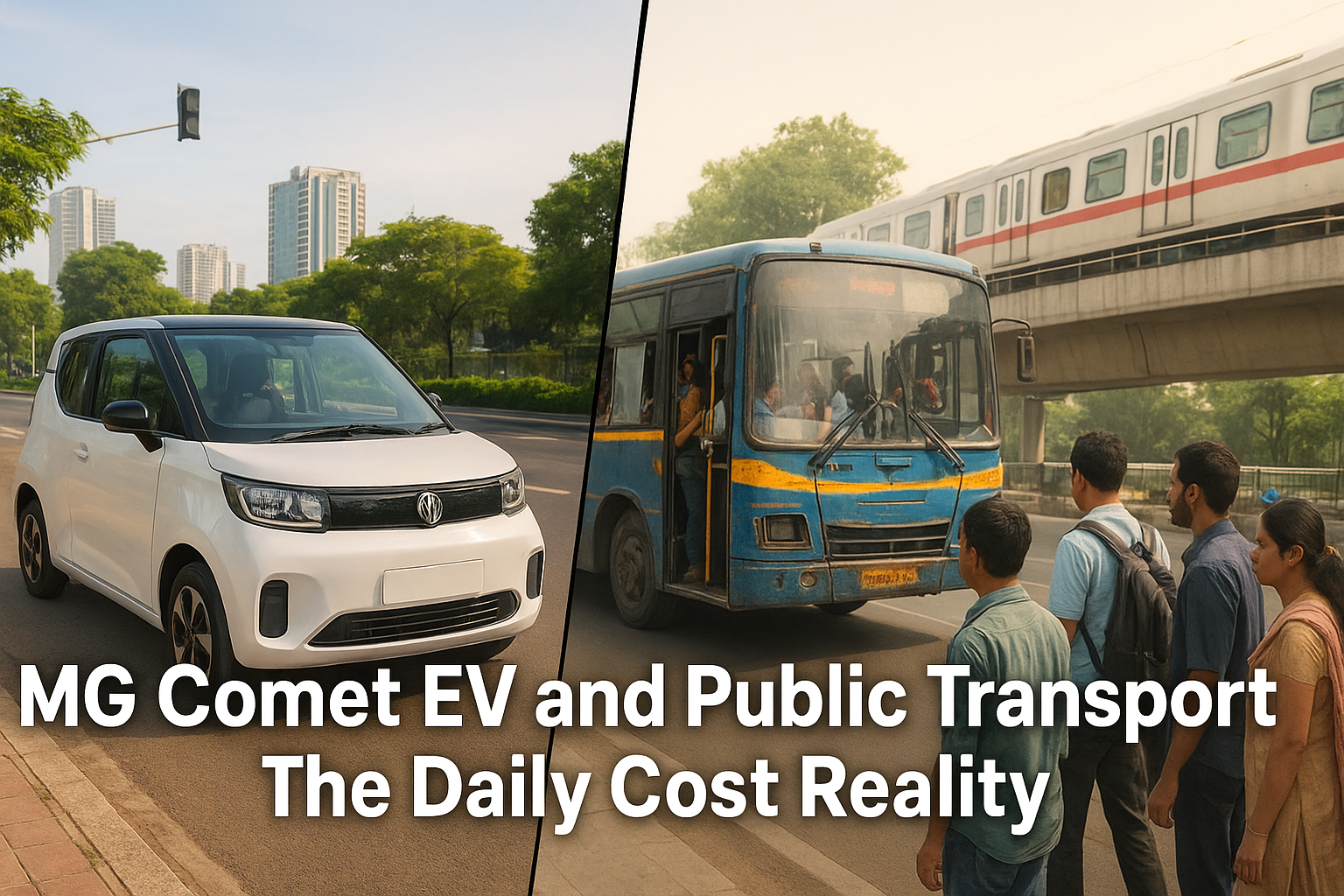When you think about your daily travel costs, the MG Comet EV and public transport cost analysis for daily use become an interesting puzzle. Should you rely on your own compact electric car or stick to buses and metros? In India’s ever-changing urban landscape, this question is shaping how people approach personal mobility. Both choices have their appeal, but your wallet—and your comfort—may tell a different story depending on your needs.
Why the Comparison Matters
In cities like Bengaluru, Mumbai, and Delhi, where traffic can test your patience and fuel prices keep climbing, electric mobility has become more than a trend—it’s a lifestyle shift. The MG Comet EV and public transport cost analysis for daily use highlight a fascinating truth: while public transport remains unbeatable for low upfront cost, the MG Comet EV offers incredible savings in the long run. It’s not just about the price per kilometer, but also about freedom, convenience, and sustainability.
The Real Cost Equation: MG Comet EV and Public Transport (India)
Let’s get real with numbers. The financial comparison between the MG Comet EV and public transport gives clarity beyond slogans and assumptions.
| Factor | MG Comet EV | Public Transport |
| Initial Cost | Hi. You’ll need ₹7.49–9.56 lakh upfront, though the Battery-as-a-Service (BaaS) plan drops the entry cost to ₹4.99 lakh. | Low. No major upfront investment. |
| Daily Running Cost | Extremely low. Around ₹0.75 per km, depending on electricity rates. A Bengaluru MG Comet EV owner reported a 6% battery usage (₹18) for the same distance that costs ₹220 in a petrol car. Even with BaaS, ₹3.10/km is cheaper than fuel. | Moderate to low. Depends on city fares. Metro and bus passes offer value but can add up monthly. |
| Maintenance | Very low. No oil changes, spark plugs, or clutch maintenance. EV simplicity saves big over time. | Negligible. Maintenance costs are someone else’s problem. |
| Depreciation | Noticeable. The car’s value drops over time, though EVs hold value better with lower wear. | Zero. You don’t own the asset, so no depreciation. |
| Financing/Interest | Moderate to high. Loans add interest to the total cost. | None. You pay as you go. |
From this view, the MG Comet EV and public transport cost analysis for daily use reveal a clear divide—owning an EV costs more at the start, but it wins easily on daily expenses.
Daily Life Realities Behind the Numbers
Numbers tell one side of the story, but human experience tells the rest. Picture this: Rahul, a young IT professional in Pune, spends around ₹3,000 a month commuting by metro and rickshaw. When he switched to the MG Comet EV under the BaaS plan, his monthly cost dropped to just under ₹1,800, including electricity. However, his initial investment was steep. For Rahul, the MG Comet EV and public transport cost analysis for daily use weren’t just about savings—they were about reclaiming his time, comfort, and privacy.

Other Factors to Consider Beyond Cost
| Factor | MG Comet EV | Public Transport |
| Convenience & Privacy | Hi. You drive on your own schedule, carry groceries, or run errands freely. | Variable. Crowded buses and metros limit flexibility. |
| Time Savings | Mixed. Compact size helps navigate traffic faster, but charging can add time. | Often predictable. Metro rides can beat cars in rush hours. |
| Parking | Moderate. Easier to park, though you’ll still pay in many areas. | None. You simply get off and go. |
| Range & Charging | 230 km per charge—ideal for urban travel, but no DC fast-charging yet. | Unlimited. No range concerns. |
| Environmental Impact | Minimal. Much lower emissions, especially with renewable energy. | Depends. Diesel buses pollute; metros and e-buses are clean. |
These factors show that the MG Comet EV and public transport cost analysis for daily use go beyond rupees and kilometers—it’s also about how you value comfort, freedom, and time.
Understanding the Bigger Picture: Your Lifestyle Matters
Choosing between an MG Comet EV and public transport isn’t a one-size-fits-all decision. It depends on your lifestyle. If you travel 40–60 km daily, have access to home charging, and value convenience, the Comet EV could save you thousands each year. If you mostly travel short distances or live near a reliable metro network, public transport may still be your smart choice.
A useful rule of thumb from our MG Comet EV and public transport cost analysis for daily use:
- If your daily travel exceeds 30 km, the EV’s low running cost quickly offsets its higher purchase price within three to four years.
- If your daily travel is under 10 km, or if you only commute occasionally, public transport remains unbeatable.
Statistical Glimpse: EV Growth and Urban Transport Trends
| Year | Stat | Source |
| 2024 | India’s EV adoption rate reached 3.2% of total passenger vehicles. | NITI Aayog |
| 2025 (Projected) | Urban metro ridership is expected to cross 10 million daily commuters. | MoHUA |
| 2026 | EV running costs are expected to drop further by 15% with better charging infrastructure. | IEA India Report |
These stats reflect the ongoing tug-of-war between sustainable public transport and private EV ownership. The MG Comet EV vs. public transport cost analysis for daily use fits neatly into this trend, where both sides are evolving to serve different segments of the population.
Comfort vs Cost: The Emotional Equation
Let’s be honest—cost isn’t the only factor. Driving your own MG Comet EV feels personal. The plush interiors, futuristic dashboard, and the silence of an electric motor add a layer of calm to your chaotic city day. Meanwhile, public transport, though practical, comes with crowd fatigue, waiting time, and limited privacy.
However, not everyone can afford the initial jump. The MG Comet EV and public transport cost analysis for daily use remind us that emotional satisfaction and financial prudence don’t always align perfectly. It’s about finding balance. You pay for what matters most—freedom or frugality.
The Break-Even Story
Experts estimate that MG Comet EV owners typically reach a break-even point between three and five years, depending on mileage and electricity costs. After that, every kilometer you drive becomes pure savings. Public transport, by contrast, never really “pays back,” but it also doesn’t lock up your money in a depreciating asset.
So, in the MG Comet EV and public transport cost analysis for daily use, the EV wins for long-term users, while buses and metros are ideal for minimal travelers or those still saving for a car.
Environmental Impact: The Quiet Revolution
One of the most overlooked aspects of the MG Comet EV and public transport cost analysis for daily use is sustainability. The MG Comet EV produces zero tailpipe emissions, dramatically cutting its carbon footprint. When powered by renewable electricity, its total emissions are far lower than diesel buses. Public transport, on the other hand, becomes greener only when electrified systems like metros or e-buses are used. As India’s energy grid becomes cleaner, both options move toward a greener future, but EVs lead the charge for individual responsibility.
The Verdict: Which Option Truly Wins?
At the end of the MG Comet EV and public transport cost analysis for daily use, the conclusion depends on who you are.
If you are a city dweller with moderate to high daily travel, want the convenience of personal mobility, and can handle the upfront investment, the MG Comet EV pays off handsomely over time. It offers unmatched comfort, low running costs, and eco-friendly credibility.
But if you’re someone who values simplicity, avoids loans, and prefers not to deal with parking or charging hassles, public transport still rules for sheer affordability and convenience.

A Grapes-Style Comparison
| Feature | MG Comet EV (Pros) | Public Transport (Pros) |
| Running Cost | Ultra-low per km | Pay-per-use, no ownership cost |
| Comfort & Privacy | Excellent | Shared, limited comfort |
| Flexibility | Anytime, anywhere | Fixed routes, scheduled |
| Eco-Friendliness | Zero tailpipe emissions | Depends on vehicle type |
| Investment | High upfront | Minimal |
| Maintenance | Negligible | None |
In this MG Comet EV and public transport cost analysis for daily use, both sides shine in their own ways. The EV feels like a personal statement about independence and sustainability, while public transport stands as a democratic, cost-efficient lifeline for millions.
Final Thoughts
Ultimately, the MG Comet EV and public transport cost analysis for daily use are not just about rupees saved—they’re about how you choose to live. The Comet EV represents freedom, control, and long-term value, while public transport represents practicality, inclusivity, and collective efficiency.
Your ideal choice depends on your finances, commute distance, and what you value most in your daily life. Both options play vital roles in India’s mobility revolution, but one thing is clear—our cities are changing, and so is the way we move within them.
🔹 Frequently Asked Questions (FAQs)
1. Is the MG Comet EV cheaper than public transport for daily commuting?
Over time, yes. The MG Comet EV has a higher upfront cost but extremely low daily running costs—around ₹0.75 per km. In contrast, public transport is cheaper initially but can cost more monthly if you travel longer distances.
2. How much does it cost to charge an MG Comet EV daily?
For most users, charging costs between ₹15 and ₹25 per day, depending on electricity rates and commute distance. Many owners report that their daily cost is less than 10% of what they used to spend on petrol.
3. Which is better for city traffic—MG Comet EV or public transport?
In congested urban areas, the MG Comet EV performs well due to its compact size and easy maneuverability. However, metro systems often offer faster, more predictable travel times for longer routes.

4. What’s the break-even period for buying an MG Comet EV?
Most MG Comet EV owners reach break-even within 3–5 years, depending on how much they drive daily. Frequent drivers benefit faster because of the EV’s low running and maintenance costs.
5. Does the MG Comet EV need a lot of maintenance?
Not at all. EVs like the Comet require minimal maintenance—no oil changes, fewer moving parts, and fewer wear-and-tear components—making it far cheaper to maintain than petrol or diesel cars.
6. Is public transport still a better option for budget-conscious people?
Yes. For people who travel occasionally or have tight budgets, public transport remains the most affordable and practical option. It eliminates fuel, insurance, and maintenance expenses altogether.
7. Which is more eco-friendly—MG Comet EV or public transport?
Both are eco-friendly in different ways. The MG Comet EV produces zero tailpipe emissions, while public transport reduces per-person emissions by carrying more passengers per trip.
8. Can I use the MG Comet EV for long trips?
It’s primarily designed for city use, with a range of around 230 km per charge. While it’s great for daily commuting, long intercity travel may require careful planning due to limited charging infrastructure.
9. Does MG Comet EV offer good value for money?
Yes, especially for urban commuters driving 30–60 km daily. It provides excellent long-term savings, quiet driving, and modern comfort, making it ideal for city professionals and families.
10. What is the final verdict between MG Comet EV and public transport?
If you value independence, comfort, and long-term savings, the MG Comet EV is the smarter choice. But if affordability and simplicity matter most, public transport remains unbeatable.

1 thought on “MG Comet EV and Public Transport Cost Analysis for Daily Use: 7 Shocking Cost Truths!”